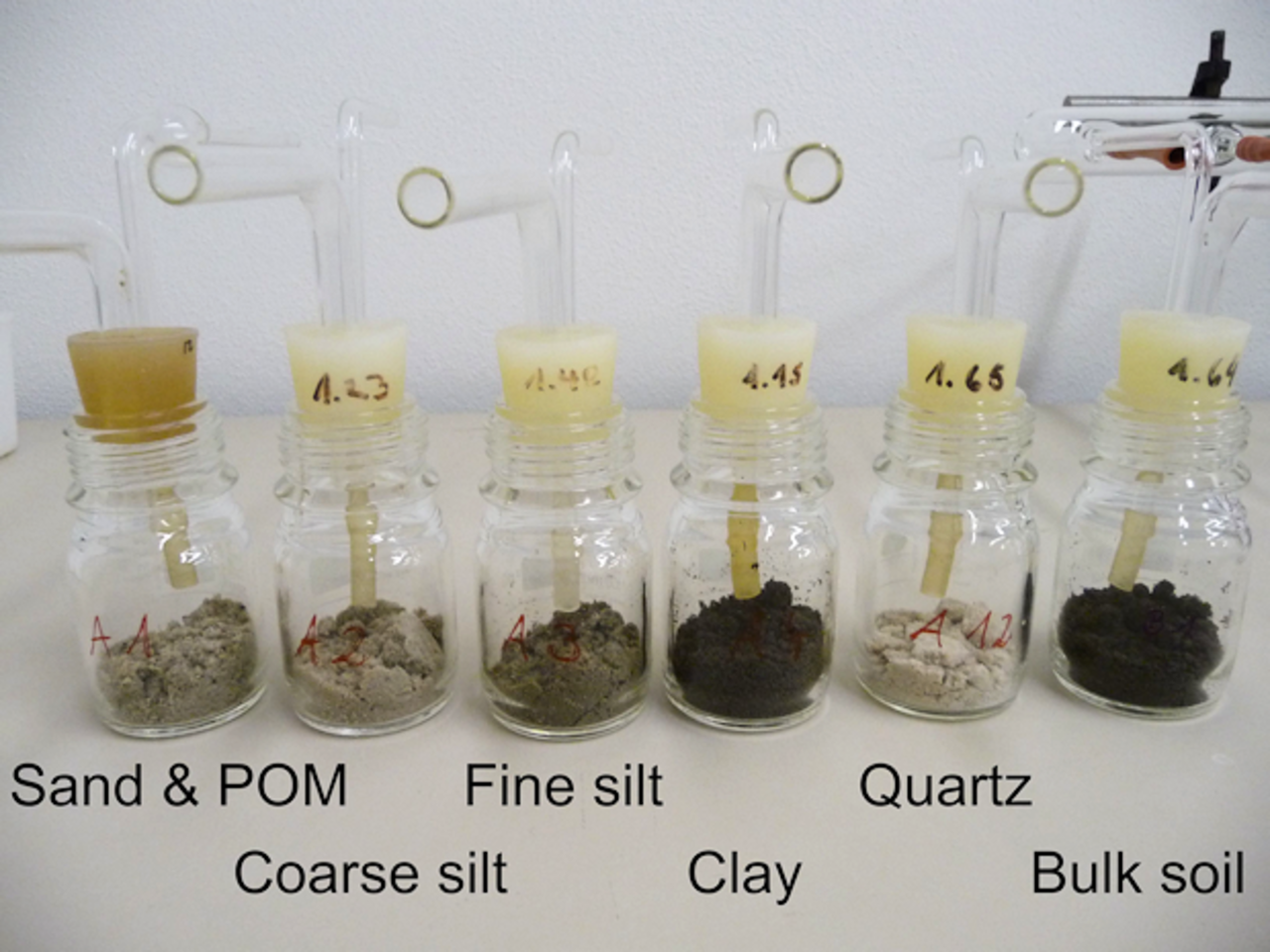Project
Soil microbial communities - microhabitats support diversity

Microbial diversity and functions of soil microhabitats
The biogeochemical interfaces (BGIs) are the organo-mineral surface of soil particles colonized by microorganisms. Depending on the particle size fraction, they can be characterized by distinct physicochemical properties.
Background and Objective
The different properties of particle size fractions are analyzed in regard to their sorption of organic pollutants and enrichment of specifically structured microbial communities. As an addition focus, the importance of organic carbon associated with these fractions shall be assessed.
Approach
- Sampling of soil organic carbon variants from long-term fertilization field sites in Bad Lachstädt (Saxony-Anhalt) and Asov (Denmark)
- Soil particle size fractionation by ultrasonication, centrifugation and wet sieving
- Extraction and purification of DNA from soils and soil particle size fractions
- Quantitative PCR of rRNA genes for quantification of bacteria and archaea, and ITS sequences for fungi
- Genetic profiling of microbial communities with T-RFLP
- Sequencing of rRNA genes with Illumina MySeq
- Stable isotope probing with phenol and 2,4 dichlorophenol as model compounds
- Microcosm studies with 14C-labled compounds
- Sorption and desorption studies
Thünen-Contact

Involved Thünen-Partners
Funding Body
-
Deutsche Forschungsgemeinschaft (DFG)
(national, öffentlich)
Duration
11.2007 - 12.2013
More Information
Project funding number: Te383/1 und Te383/2
Project status:
finished
Publications
- 0
Hemkemeyer M, Tebbe CC (2021) Importance of soil primary particles for shaping the diversity and activity of soil microbial communities - Results of a meta-analysis. Verhandl Gesellsch Ökol 50: 128

![[Translate to English:] [Translate to English:]](/media/_processed_/e/3/csm_Demetra2_c8a192c0f8.jpg)
![[Translate to English:] [Translate to English:]](/media/_processed_/e/2/csm_Demetra1_Panorama_8557ee3b13.jpg)





